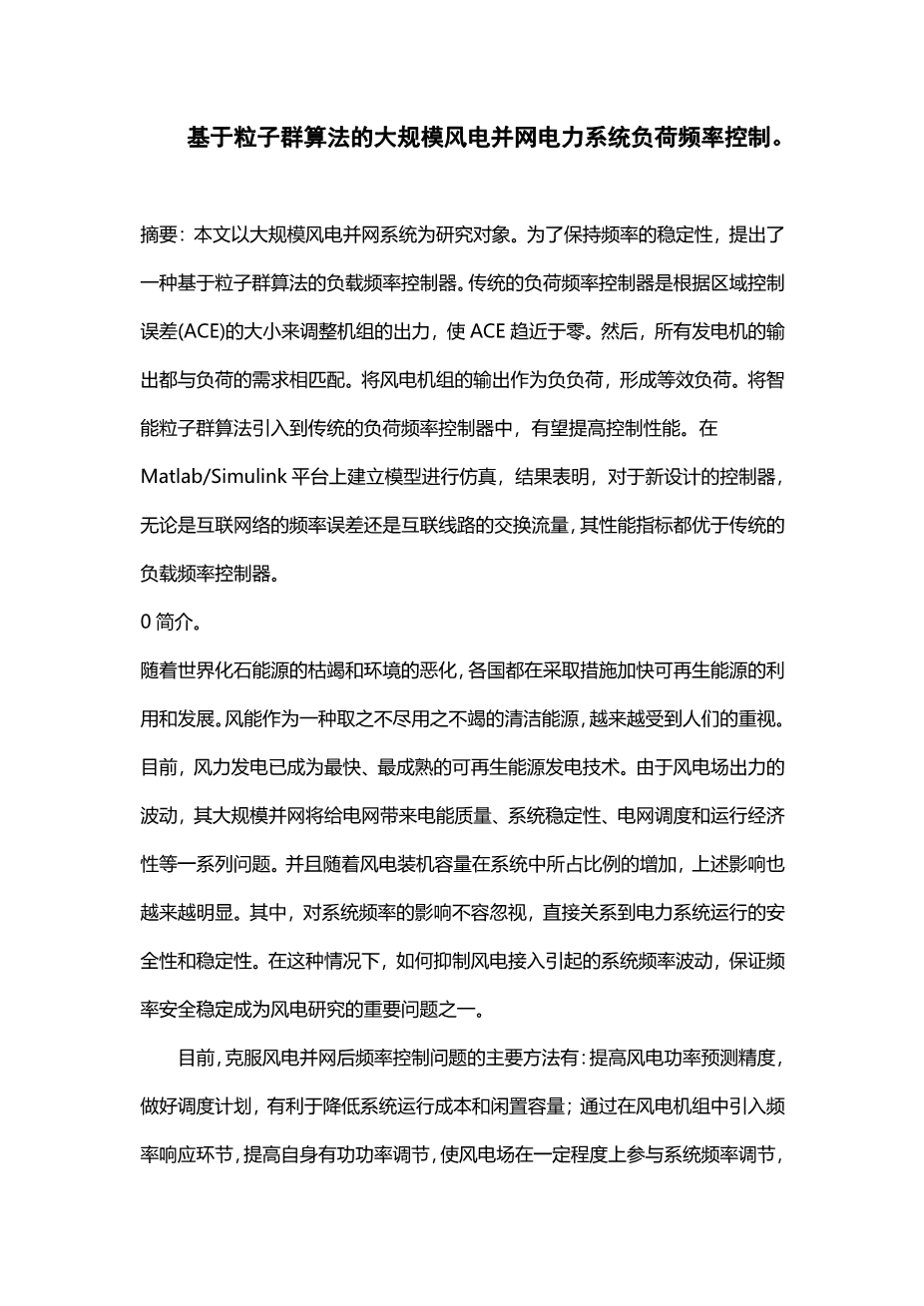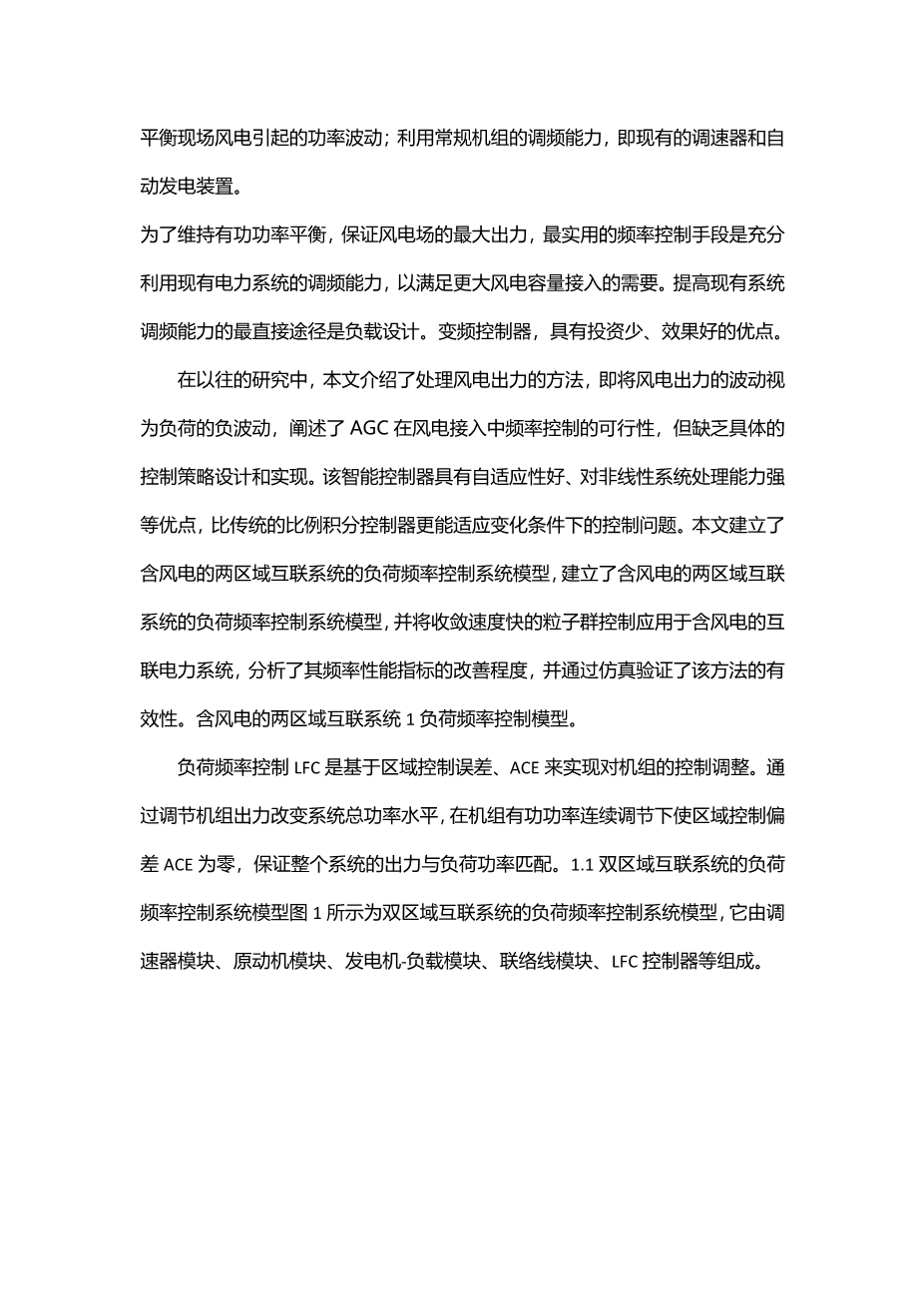Load frequency control of power systems with large scale of wind power integrated based on particle swarm algorithm
Abstract: An interconnected power system with large scale of wind power integration is taken as our research object. In order to keep the stability of frequency, a PSO based load frequency controller is proposed. According to the amount of area control error (ACE), traditional load frequency controller is to adjust the output of units in order to make ACE approach to zero. Then output from all generators is matched to the demand from load. Output from wind units is taken as a negative load and an equivalent load is formed. Intelligent PSO is introduced into traditional load frequency controller and is expected to improve the control performance. The simulation based on the model, which is constructed on Matlab/Simulink platform demonstrates that, for the new design controller, its performance index whether frequency error of interconnected network or exchange flow for the interconnected line is better than that of traditional load frequency controller.
0 Introduction
With the depletion of the worlds fossil energy and environmental degradation, countries are taking measures to speed up the use of renewable energy and development. As a kind of inexhaustible clean energy, wind energy has been paid more and more attention. At present, wind power generation has become the fastest and most mature renewable energy generation technology. Due to the fluctuation of wind farms output power, its large-scale grid-connection will bring a series of problems to the power grid, such as power quality, system stability, scheduling and Operation Economy of the grid, etc. . And with the increase of the proportion of wind power capacity in the system, the above effects become more and more significant. Among them, the impact on the system frequency can not be ignored, it is directly related to the security and stability of power system operation. In this case, how to suppress the system frequency fluctuation caused by wind power access to ensure the frequency security and stability has become one of the important issues in wind power research.
At present, the main methods to overcome the frequency control problem after the wind power is connected to the system are as follows: improve the precision of the wind power forecast, do well the dispatching plan, which is helpful to reduce the system operation cost and spare capacity; By introducing a frequency response link into the wind turbine to improve its own active power regulation, the wind farm can participate in the system frequency regulation to a certain extent, balance The power fluctuation caused by wind power on the spot; utilize the frequency regulation ability of conventional units, i. e. existing speed governor and automatic generating device.
In order to maintain the balance of active power and ensure the maximum output of wind farm, the most practical means of frequency control is to fully exploit the frequency modulation ability of existing power system to meet the needs of larger wind capacity access. The most direct way to improve the frequency modulation ability of the existing system is the design of load frequency controller, which has the advantages of less investment and good effect.
In the previous research, this paper introduces the way of dealing with wind power output, that is, taking the fluctuation of wind power output as a negative load fluctuation, and illustrates the feasibility of frequency control of AGC in wind power access, but lacks the concrete control strategy design and the implementation. The intelligent controller has the advantages of good self-adaptability and dealing with non-linear system, and it can adapt to the control problem under the changing condition better than the traditional proportional integral controller, in this paper, the load frequency control system model of two-area interconnected system with wind power is established, and the load frequency control system model of two-area interconnected system with wind power is established, then the particle swarm control with fast convergence is applied to the interconnected power system with wind power access, and the improvement degree of the frequency performance index is analyzed, which is verified by an example on Matlab / Simulink.
1 Load Frequency Control Model of two-area interconnected system with wind power
Load Frequency Control LFC is based on Area Control Error, ACE to achieve the Control of the unit adjustment. It changes the total power level of the system by adjusting the output of the unit, and makes the regional control deviation ACE zero under the continuous regulation of the active power of the unit, so as to ensure the matching of the output and the load power of the whole system. 1.1 load frequency control system model for two-area interconnected systems the load frequency control system model for two-area interconnected systems is shown in figure 1, it consists of governor module, Prime Mover Module, generator-load module, tie-line module, LFC controller and so on.
Fig. 1 Model of load frequency control for an
interconnected grid with two regions
For an interconnected power system, each control area controls only the load disturbances that occur in its own area under the premise of a given tie-line exchange power, the load frequency controller controls the system frequency and the tie line exchange power simultaneously. The tie-line frequency deviation control (TBCTBC) is often used in the load frequency controller, i. e. the two-zone frequency deviation is
1.2 wind speed model
The wind speed is the main parameter which affects the output of the generator. At present, the four-component model is widely used at home and abroad, that is, it is composed of basic wind, gust, gradual
剩余内容已隐藏,支付完成后下载完整资料


英语译文共 21 页,剩余内容已隐藏,支付完成后下载完整资料
资料编号:[416115],资料为PDF文档或Word文档,PDF文档可免费转换为Word


